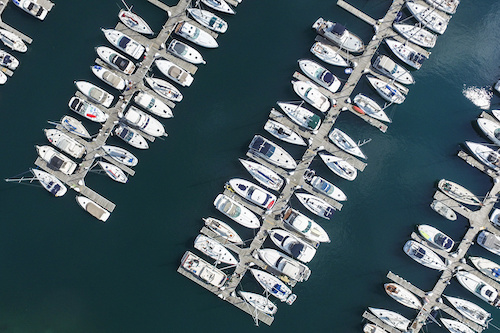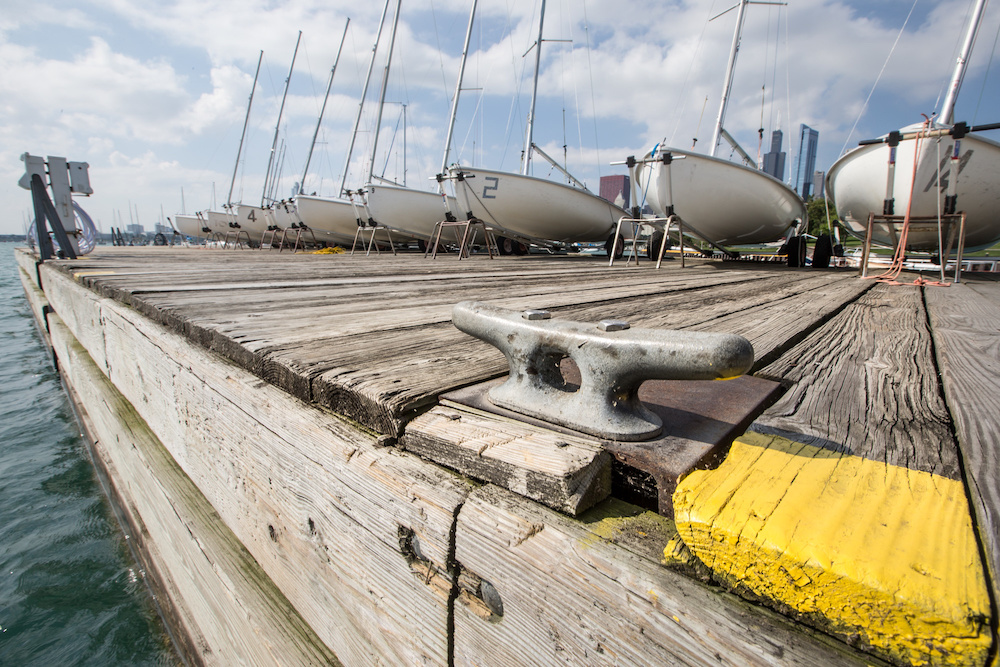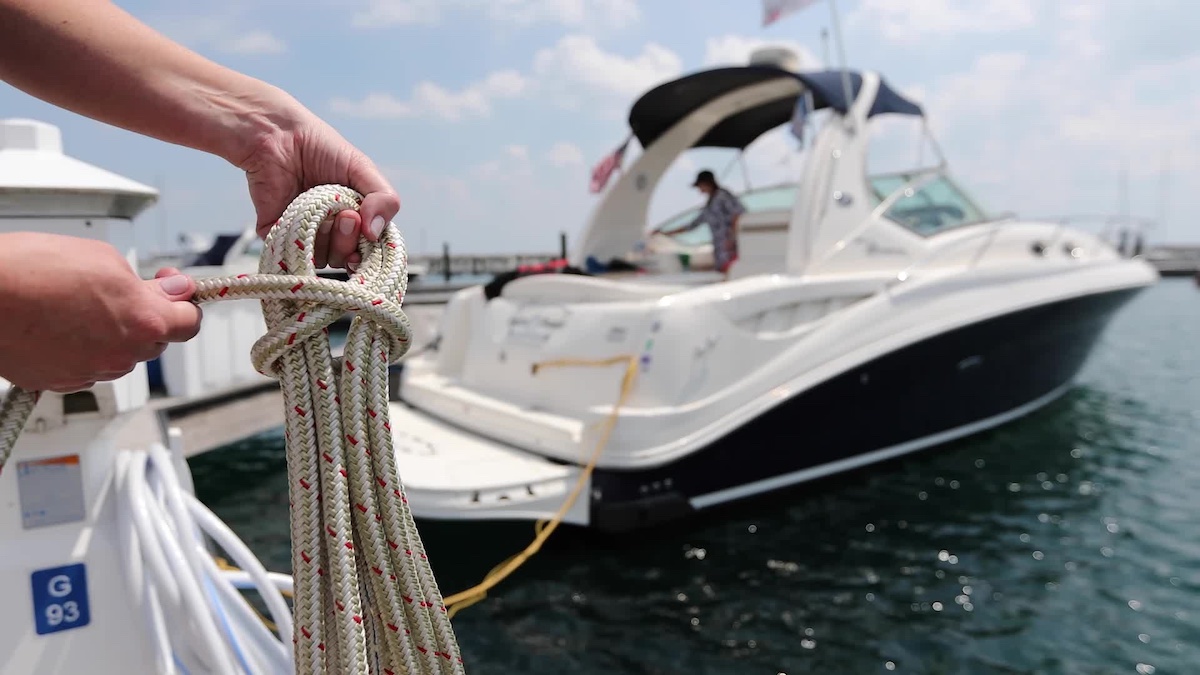Tying up your boat to a dock is a basic skill that will become easy with a little practice and experience. When a boat is properly tied up at a dock, it will not only be secure—it can’t float away—but will also be protected from damage and not able to damage other boats.
How to Tie Up a Boat to a Dock
- Plan your approach—consider wind direction and currents.
- Always start by tossing a spring line to someone on the dock.
- Secure a line from the bow cleat to a dock cleat forward of the boat.
- Secure the spring line to a dock cleat angled aft.
- Attach a line from the stern cleat on the side of the boat away from the dock to a dock cleat behind the boat.
Learn More: 5 Basics Boating Knots for Beginners
Think about how you will secure the boat even before you pull up to a dock or into a slip. Take a look at the direction of the wind and any current (look for flags if you are unsure about wind direction, and look for how water is moving around pilings as an indication of current), and if you are in tidal waters look at water marks on pilings, which will tell you if you are near high or low tide. Before you approach the dock or slip have your dock lines ready, your fenders (soft vinyl “bumpers”) deployed, and give your crew instructions on how to help.
When tying one side of the boat to a dock, such as a fuel dock, you can secure the boat for any situation with three lines.
- Always start by tossing a spring line (attached to the cleat in the middle of the boat) to someone on the dock, who can hold the boat in place.
- Secure a line from the bow cleat to a dock cleat forward of the boat.
- Then secure the spring line to a dock cleat angled aft, toward the back of the boat. These two lines will keep the boat from moving fore and aft.
- Attach a line from the stern cleat on the side of the boat away from the dock to a dock cleat behind the boat.
- Tying each line at an angle, rather than straight to the dock (called a breast line) will allow the boat to move up and down in reaction to waves, wakes or changing tide if the dock is not floating.
Tying a Boat in a Slip
To tie up in a slip, either one flanked by docks or to an end dock and pilings, using four lines is usually the best method.
- If you’ve backed into the slip, attach a line to each stern cleat on the boat and then cross them to the dock cleats.
- Secure bow lines from each side of the boat forward to the dock cleats or pilings. This will secure the boat in each direction and allow enough line for the boat to rise and fall.
- In area with a lot of tide, you may need to adjust the lines if you are tying up at either high or low tide and the dock is not floating.
- If you tie up to a floating dock, of course, it will rise or fall with the tide along with the boat.

Cleats & Hitches
A cleat is the piece of horn-shaped hardware attached to both your boat and usually to the dock to which you’ll secure the dock lines. Never try to secure a dock line to another part of your boat, like a railing, the windshield frame or a passenger grab handle. Only the cleats are secured through the deck with hardware stout enough to hold the boat.
Most popular boats will have two stern cleats, two cleats in the middle of the boat (sometimes called spring cleats) and two cleats towards the bow. There may also be a cleat at the bow peak. Larger boats may have two cleats between the bow and the stern cleats.
A dock line usually has a loop on one end. This is the end you’ll attach to the boat, by passing the loop through the center of the cleat and then back over the horns of the cleat, working towards the boat. The other end of the line is secured to the cleats on the dock using a cleat hitch. To tie a cleat hitch, pass the line once around the cleat’s base, then make two turns in a figure 8 motion around the horns before making a third turn with the line turned under itself in a half-hitch. This secures the line.
You Might Also Like:
- Anchoring a Boat: Step-by-Step Guide
- How to Navigate a Boat
- Boat Buyer's Guide
- Owning & Operating Resources
- Explore Different Boat Types


